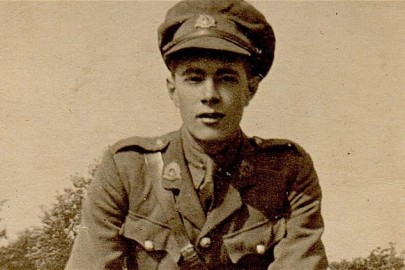Brit considers a hit song of utterly bleak existential numbness…
Peggy Lee’s Is That All There Is? must be one of the strangest hit records ever made.
Dan Daniels, Guy Lombardo and Tony Bennett all released versions of it, but none managed to match the success of Lee’s recording, which features orchestral arrangement by Randy Newman. Released in 1969, it was her first Top 40 US pop hit since Fever over a decade earlier. It reached number 11, but topped the adult contemporary Billboard charts and won her a Grammy for best female vocal performance.
Which isn’t bad for a song consisting of spoken word verses of utterly bleak, existential numbness…
I know what you must be saying to yourselves.
If that’s the way she feels about it why doesn’t she just end it all?
Oh, no. Not me. I’m in no hurry for that final disappointment.
For I know just as well as I’m standing here talking to you,
when that final moment comes and I’m breathing my last breath, I’ll be saying to myself,Is that all there is?
Even stranger still is that it was penned by Jerry Leiber and Mike Stoller, the songwriting powerhouses best known for such poppy fizz as Elvis’s Hound Dog and the Coasters’ Yakety-Yak.
Is That All There Is? is directly inspired by an 1896 short story by Thomas Mann called Disillusionment, in which the narrator is accosted at an al fresco café in the Piazza di San Marco by what must be the most dreadful holiday bore in history: a man in a ‘stiff black hat’ who proceeds to explain that everything in his life thus far has been an existential disappointment.
There was a fire at night in my parents’ house, when I was hardly more than a child.. I discovered it first, and I remember that I went rushing through the house shouting over and over: ‘Fire, fire!’ I know exactly what I said and what feeling underlay the words, though at the time it could scarcely have come to the surface of my consciousness. ‘So this,’ I thought, ‘is a fire. This is what it is like to have the house on fire. Is this all there is to it?’…This fire was the first great event in my life. It left me defrauded of my hope of fearfulness.
So this insufferable partypooper goes on…
“I have roved the globe over, seen all the best-praised sights, all the works of art upon which have been lavished the most extravagant words. I have stood in front of these and said to myself: ‘It is beautiful. And yet — is that all? Is it no more beautiful than that?’
[…]
“Years ago I fell in love with a girl…But she loved me not, which was not surprising, and she.married another. What other experience can be so painful as this? What.tortures are greater than the dry agonies of baffled lust? Many a night I lay.wide-eyed and wakeful; yet my greatest torture resided in the thought: ‘So this.is the greatest pain we can suffer. Well, and what then — is this all?’
…and on, before signing off with:
“So I dream and wait for death. Ah, how well I know it already, death, that last disappointment! At my last moment I shall be saying to myself: ‘So this is the great experience — well, and what of it? What is it after all?’
“But it has grown cold here on the piazza, sir — that I can still feel – ha ha! I have the honour to bid you a very good night.”
Yeah, cheers mate.
You can read the full Mann story, translated from the German by H.T. Lowe-Porter here.











That Thomas Mann bloke sounds like a true german, always with the angst!
What a shame that the ‘spoken word’ way of performing songs seems to have died out (apart from in those witterings of William Shatner.) All those earnest ‘story’ songs that Elvis and others used to do were hilarious. Apart from Old Shep of course. That was devastating.
Stout chap, Thomas Mann, and his brother. Where would Visconti be today without him, apart from six feet down in the Italian earth, what an ad for the vaporetto. Would expect nothing less from a man who used Goethe as a template. Although which particular bits he used has never been clear.
As for the song, the most significant statement ever made in music, rivals John Cage’s “I have nothing to say and I am saying it” those ten words that so influenced the career of Gerhard Richter.
You think he comes across as an old misery guts in English, try it in German. Makes Hardy seem like Allan Carr.
Here at Chez Mary, we are all devoted Peggy Lee fans and are particularly fond of this curious piece. It is very odd and quite moving. What a surprise to learn of its inspiration. Thank you!
My younger daughter does a stylish version of ‘Is That All There Is?’ (with ukulele accompaniment) that goes down very well at the traditional family Christmas singsong. We feel it adds the essential poignancy to the season’s festivities. She usually follows it up with another of Miss Lee’s hits, ‘Why Don’t You Do Right?’ One can sometimes feel a little proud of the cultural capital one has managed to pass on.
Thanks for that Mary. A ukulele version of Is That All There Is? sounds like perhaps the perfect party piece. I’m going to train my daughters likewise.
I wouldn’t say the training period is altogether a pleasure, Brit. There is a long lead in of practising for some weeks prior to the big performance, which can become a little hard on other family members going about their household business. I have even been known to compose some bleak word verses of my own to the song (under my breath, of course). But all is forgiven on the day.